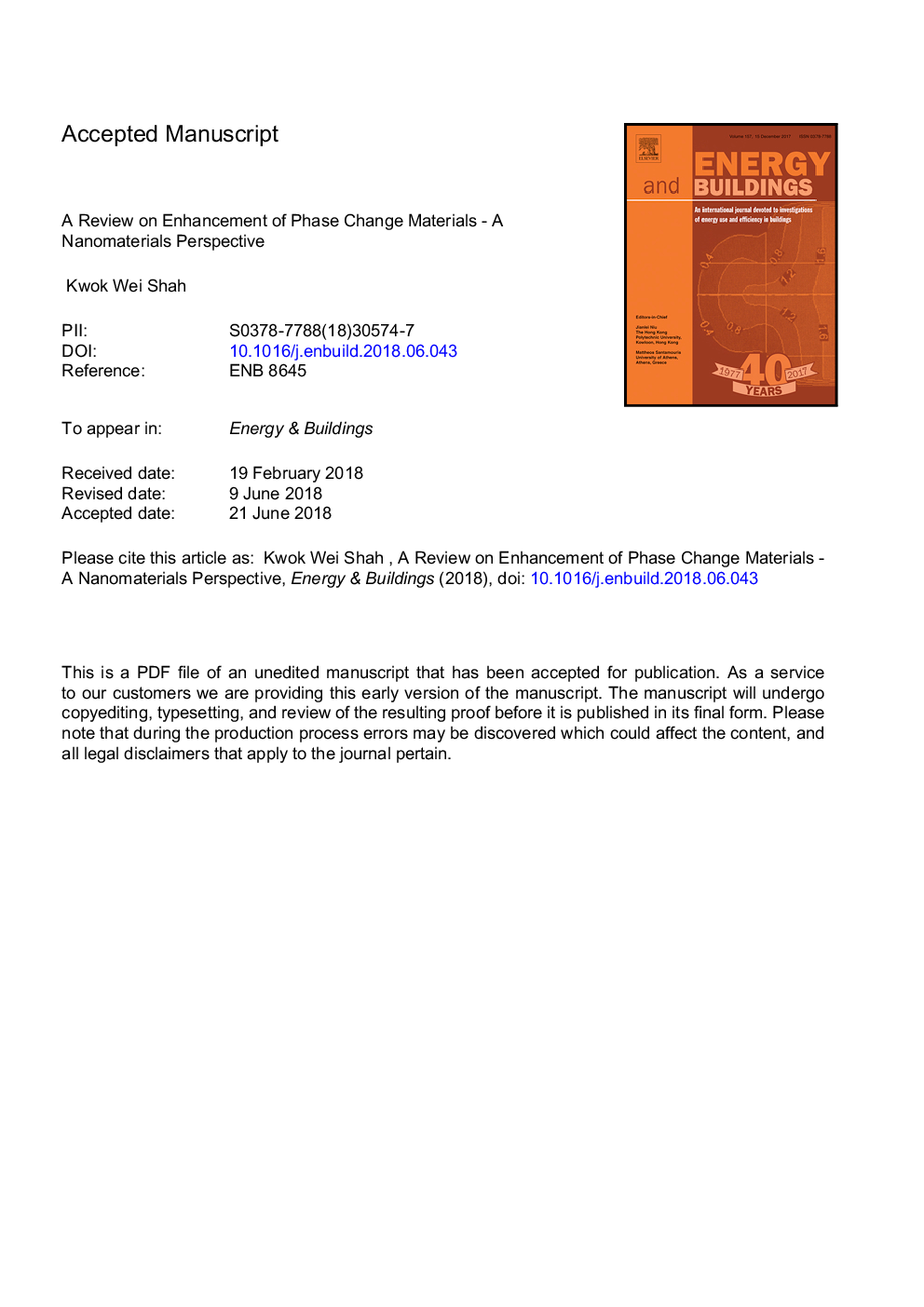| Article ID | Journal | Published Year | Pages | File Type |
|---|---|---|---|---|
| 6727213 | Energy and Buildings | 2018 | 52 Pages |
Abstract
Buildings are exceptionally high electrical consumers and expend as much as 45% of total energy consumed globally. Amongst passive cooling methods, phase change materials (PCM) are implemented in buildings to prevent heat accumulation, enhance heat absorption, promote temperature moderation and mitigate indoor heat gain. Thermal energy storage using PCM constitutes an effective method to raise the overall heat capacity of buildings. PCMs with immense energy density have brought about strong interests in developing high thermal inertia buildings with high energy-savings. One main disadvantage of PCM is their poor thermal conductivity that delays their energy charging/discharging process and storage performance. Consequently, one major focus of PCM research has been the enhancement of PCM's thermal conductivity using nanotechnology and nanomaterials. Recently, fast growing advancements in the field of nanomaterials have led to a cutting-edge technology frontier of developing new ultra-small nanosized particles to enhance the thermophysical properties of conventional PCMs. Dispersing thermal conductive nanoparticles such as nanometals, nanometal-oxide and nanocarbon can vastly improve PCM's thermal and physical attributes such as super-cooling, viscosity, heat capacity and thermal conductivity. This article reviews recent reports on these emerging functional nanomaterials (type of material used, synthesis method, morphology and enhancement effect) used in nano-enhanced PCMs (nePCMs) to achieve superior thermal performance suitable for passive-cooling applications in the built-environment.
Related Topics
Physical Sciences and Engineering
Energy
Renewable Energy, Sustainability and the Environment
Authors
Kwok Wei Shah,
